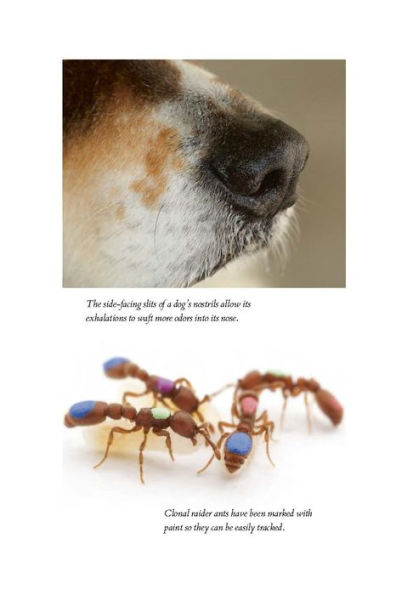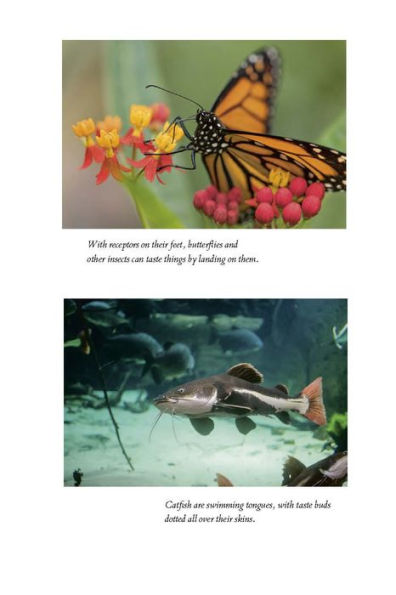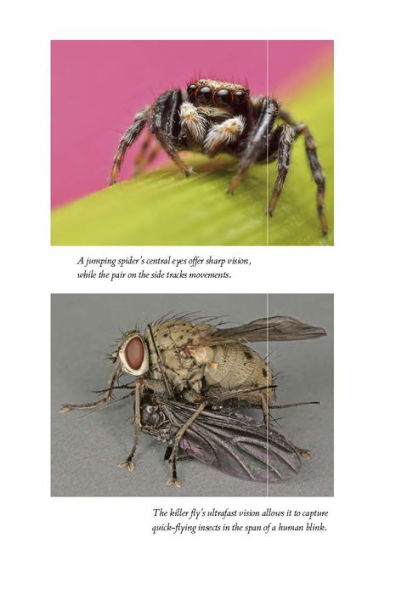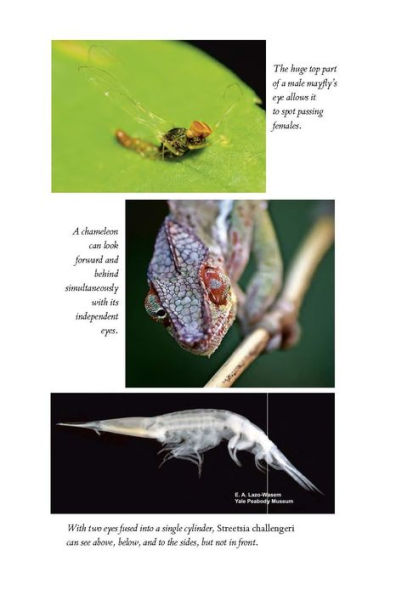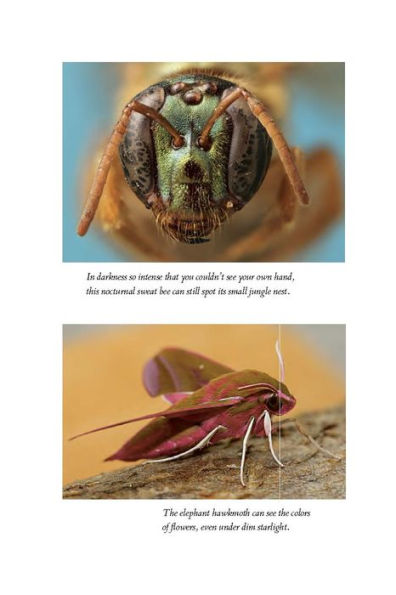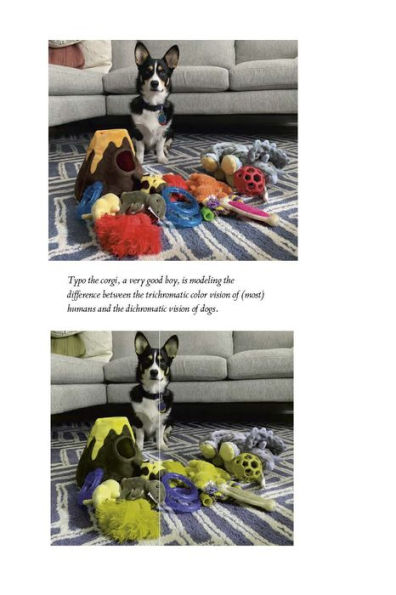Read an Excerpt
1.
Leaking Sacks of Chemicals
Smells and Tastes
“I don’t think he’s been in here before,” Alexandra Horowitz tells me. “So it should be very smelly.”
By “he,” she means Finnegan—her ink-black Labrador mix, who also goes by Finn. By “here,” she means the small, windowless room in New York City in which she runs psychological experiments on dogs. By “smelly,” she means that the room should be bursting with unfamiliar aromas, and thus should prove interesting to Finn’s inquisitive nose. And so it does. As I look around, Finn smells around. He explores nostrils—first, intently sniffing the foam mats on the floor, the keyboard and mouse on the desk, the curtain draped over a corner, and the space beneath my chair. Compared to humans, who can explore new scenes by subtly moving our heads and eyes, a dog’s nasal explorations are so meandering that it’s easy to see them as random and thus aimless. Horowitz thinks of them differently. Finn, she notes, is interested in objects that people have touched and interacted with. He follows trails and checks out spots where other dogs have been. He examines vents, door cracks, and other places where moving air imports new odorants—scented molecules. He sniffs different parts of the same object, and he’ll sniff them at different distances, “like he’s approaching the Van Gogh and seeing what the brushstrokes look like up close,” says Horowitz. “They’re in that state of olfactory exploration all the time.
Horowitz is an expert on dog olfaction—their sense of smell—and I’m here to talk with her about all things sniffy and nasal. And yet, I’m so relentlessly visual that when Finn finishes nosing around and approaches me, I’m instantly drawn to his eyes, which are captivating and brown like the darkest chocolate. It takes concerted effort to refocus on what’s right in front of them—his nose, prominent and moist, with two apostrophe-shaped nostrils curving to the side. This is Finn’s main interface with the world. Here’s how it works.
Take a deep breath, both as demonstration and to gird yourself for some necessary terminology. When you inhale, you create a single airstream that allows you to both smell and breathe. But when a dog sniffs, structures within its nose split that airstream in two. Most of the air heads down into the lungs, but a smaller tributary, which is for smell and smell alone, zooms to the back of the snout. There it enters a labyrinth of thin, bony walls that are plastered with a sticky sheet called the olfactory epithelium. This is where smells are first detected. The epithelium is full of long neurons. One end of each neuron is exposed to the incoming airstream and snags passing odorants using specially shaped proteins called odorant receptors. The other end is plugged directly into a part of the brain called the olfactory bulb. When the odorant receptors successfully grab their targets, the neurons notify the brain, and the dog perceives a smell. You can breathe out now.
Humans share the same basic machinery, but dogs just have more of everything: a more extensive olfactory epithelium, dozens of times more neurons in that epithelium, almost twice as many kinds of olfactory receptors, and a relatively larger olfactory bulb. And their hardware is packed off into a separate compartment, while ours is exposed to the main flow of air through our noses. This difference is crucial. It means that whenever we exhale, we purge the odorants from our noses, causing our experience of smell to strobe and flicker. Dogs, by contrast, get a smoother experience, because odorants that enter their noses tend to stay there, and are merely replenished by every sniff.
The shape of their nostrils adds to this effect. If a dog is sniffing a patch of ground, you might imagine that every exhalation would blow odorants on the surface away from the nose. But that’s not what happens. The next time you look at a dog’s nose, notice that the front-facing holes taper off into side—facing slits. When the animal exhales while sniffing, air exits through those slits and creates rotating vortices that waft fresh odors into the nose. Even when breathing out, a dog is still sucking air in. In one experiment, an English pointer (who was curiously named Sir Satan) created an uninterrupted inward airstream for 40 seconds, despite exhaling 30 times during that period.
With such hardware, it’s no wonder that dog noses are incredibly sensitive. But how sensitive? Scientists have tried to find the thresholds at which dogs can no longer smell certain chemicals, but their answers are all over the place, varying by factors of 10,000 from one experiment to another.4 Rather than focusing on these dubious statistics, it’s more instructive to look at what dogs can actually do. In past experiments, they have been able to tell identical twins apart by smell. They could detect a single fingerprint that had been dabbed onto a microscope slide, then left on a rooftop and exposed to the elements for a week. They could work out which direction a person had walked in after smelling just five footsteps. They’ve been trained to detect bombs, drugs, landmines, missing people, bodies, smuggled cash, truffles, invasive weeds, agricultural diseases, low blood sugar, bedbugs, oil pipeline leaks, and tumors.
Migaloo can find buried bones at archeological sites. Pepper uncovers lingering oil pollution on beaches. Captain Ron detects turtle nests so that the eggs can be collected and protected. Bear can pinpoint hidden electronics, while Elvis specializes in pregnant polar bears. Train, who flunked out of drug detection school for being too energetic, now uses his nose to track the scat of jaguars and mountain lions. Tucker used to hang off the bow of boats and sniff for orca poop; he has since retired, and his duties now fall to Eba. If it has a scent, a dog can be trained to detect it. We redirect their Umwelten in service of our needs, to compensate for our olfactory shortcomings. These feats of detection are worth marveling at, but they are also parlor tricks. They allow us to abstractly appreciate that dogs have a great sense of smell, without truly appreciating what that means for their inner lives or how their olfactory world differs from a visual one.
Unlike light, which always moves in a straight line, smells diffuse and seep, flood and swirl. When Horowitz observes Finn sniffing a new space, she tries to ignore the clear edges that her vision affords, and instead pictures “a shimmering environment, where nothing has a hard boundary,” she says. “There are focal areas, but everything is sort of seeping together.” Smells travel through darkness, around corners, and in other conditions that vex vision. Horowitz can’t see into the bag slung over the back of my chair, but Finn can smell into it, picking up molecules drifting from the sandwich within. Smells linger in a way that light does not, revealing history. The past occupants of Horowitz’s room have left no ghostly visual traces, but their chemical imprint is there for Finn to detect. Smells can arrive before their sources, foretelling what’s to come. The scents unleashed by distant rain can clue people in to advancing storms; the odorants emitted by humans arriving home can send their dogs running to a door. These skills are sometimes billed as extrasensory, but they are simply sensory. It’s just that things often become apparent to the nose before they appear to the eyes. When Finn sniffs, he is not merely assessing the present but also reading the past and divining the future. And he is reading biographies. Animals are leaking sacks of chemicals, filling the air with great clouds of odorants. While some species deliberately send messages by releasing smells, all of us inadvertently do so, giving away our presence, position, identity, health, and recent meals to creatures with the right noses.
“I never thought much about the nose at all,” says Horowitz. “It didn’t occur to me.” When she started studying dogs, she focused on things like their attitudes to unfairness—the kind of topic that’s interesting to psychologists. But after reading Uexküll and thinking about the Umwelt concept, she shifted her attention to smell—the kind of topic that’s interesting to dogs.
She notes, for example, that many dog owners deny their animals the joys of sniffing. To a dog, a simple walk is an odyssey of olfactory exploration. But if an owner doesn’t understand that and instead sees a walk as simply a means of exercise or a route to a destination, then every sniffy act becomes an annoyance. When the dog pauses to examine some invisible trace, it must be hurried along. When the dog sniffs at poop, a carcass, or something the owner’s senses find displeasing, it must be pulled away. When the dog sticks its nose in the crotch of another dog, it’s being indecorous: Bad dog! After all, in Western cultures at least, humans don’t smell each other. “You could give someone a hug, but if you actually sniffed them, that would be very weird,” says Horowitz. “I could say that your hair smells great, but I can’t say that you smell great, unless we’re intimate.” Time and again, people impose their values—and their Umwelt—onto their dogs, forcing them to look instead of sniff, dimming their olfactory worlds and suppressing an essential part of their caninehood. That was never clearer to Horowitz than when she took Finn to a nosework class.















